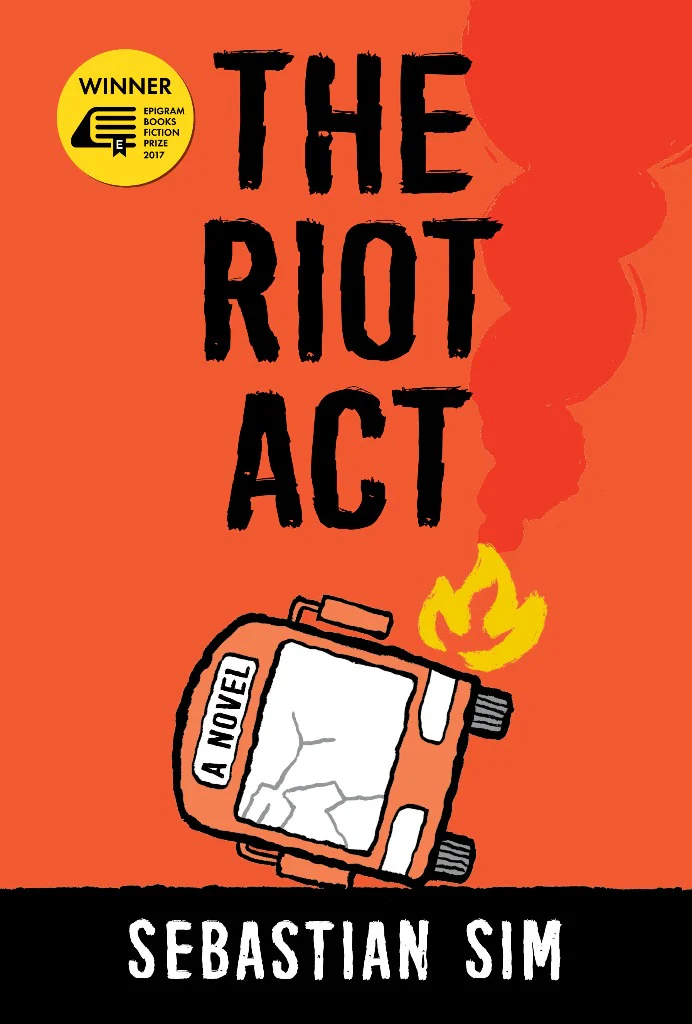
Author: Sebastian Sim
Genre: Satirical Literary Fiction / Social Drama / Dark Comedy
Ideal For: Readers who relish sharp satire that zeroes in on society’s undercurrents, who appreciate characters imperfectly human yet vividly real, and who are intrigued by how public event and private life collide. If you’ve ever wondered what happens after the headlines fade—this is your book.
Plot Summary (Spoiler-Free)
From the very first pages of The Riot Act, Sim plunges you into the aftermath of Singapore’s 2013 Little India riot—a violent, disruptive moment in the city-state’s recent memory. The event becomes both catalyst and backdrop as the lives of three women—Hashwini, Donna and Lee—intersect in unexpected ways. Hashwini thinks she may have accidentally caused the riot by making the wrong phone call. Donna is a hapless PR professional asked to spin the story for her agency. And Lee is a domestic worker whose truth lies buried in the margins of the official narrative. In the ripples of the riot, their mundane days—in schools, in hostels, in middle-class apartments—fracture.
Sim does more than dramatise a headline. He uses the riot as a rupture: a fissure in the ordered façade of progress, racial harmony and national branding. The characters don’t just live through the aftermath—they live with it. Their lives entangle, their pasts stain, their identities shift. The riot becomes metaphor: slip-ups of language, failure of empathy, the distance between official story and lived reality.
Sim’s Voice: Wry, Relentless, Unsettlingly Familiar
Sim writes like someone who knows the architecture of a story and isn’t afraid to demolish it. The prose is crisp, the scenes haptic—barbed wires, CCTV cameras, mother-daughter arguments, phone calls that echo across city blocks. There’s humour—dark, absurd humour—but it never undercuts the tension. One feels the characters’ internal grinding wheels: Hashwini’s panic, Donna’s polished façade cracking, Lee’s quiet exhaustion.
You’ll find yourself recognising intersections—public buses, migrant-worker dormitories, tuition-centres, corporate PR meetings—but you’ll see them in a new light: unstable, exposed, vulnerable. Sim’s tone doesn’t preach. He lets the scene speak. A misplaced phrase here, a long lunch break there, and suddenly you’re looking at ambition, race, class. The riot isn’t just event. It’s lens.
Themes That Snap Into Focus
Chaos beneath control. Singapore’s image is of order, cleanliness, predictability. Sim takes that and says: What if the dark underbelly didn’t stay hidden? The riot becomes the moment of collapse—and the book argues: the ripple lasts.
Voice and invisibility. Lee’s world—migrant, domestic, hidden—is one of margins. Donna’s world is publicity, image, gloss. Hashwini’s is ambition, panic, visibility. Their perspectives critique who gets seen and who stays unseen.
Language, misunderstanding, identity. The riot’s trigger is a mis-called cab, a misinterpreted phrase, a chain reaction. Sim uses language as fault-line: the official report vs. the lived story; the textbook version vs the messy human version.
The cost of story-telling. Donna’s role in shaping the narrative about the riot forces you to ask: Whose story is told? Whose is suppressed? The book doesn’t give pat justice. It offers tension.
Individual failure, collective strain. Each character grapples with personal crisis while the city watches. Sim shows how big events aren’t just dramas—they’re accumulation of small, everyday fractures.
What Works Brilliantly
Structure with urgency. The interlaced lives, the time-jumps, the fragmented mirrors—it keeps you on edge but also feeling the coherence of cause and effect.
Characters rooted in the concrete. Hashwini ticking off boarding school reputations; Donna rehearsing a spin; Lee minding her employer’s child—they feel ordinary and high-stakes simultaneously.
Setting as character. The city’s institutions, the dorms, the street 24/7 camera lens, the audited reports—they all breathe and affect. Sim makes you sense place as pressure.
Satire with bite. The comedic moments—office banter, social-media panic, PR spin—all amuse, but they also expose. Sim doesn’t use them as relief—they’re part of the lens.
Emotion beneath the precision. The book rarely weeps. Instead, it fractures. You feel panic, shame, compassion. It’s not tidy. It’s real. That lends weight.
A Slight Note (But One That Deepens the Effect)
If you prefer narratives that wrap up every loose end, delight in redemption arcs, or deliver clear heroes and villains, The Riot Act might frustrate at times. Some plot strands remain unfinished, characters remain ethically messy. But I argue that’s its strength: the real world seldom ties cleanly. And maybe a riot’s aftermath deserves that ambiguity.
The Riot Act is a full-on five-star novel because it transcends its concept. It’s not just “a novel about a riot”. It’s about the aftershocks: personal, cultural, national. It gives you laughter and tension, push and bruise, urgency and reflection. Sebastian Sim has crafted a book that is sharp, smart, and indispensable. If you’re ready for fiction that makes you think harder, feel deeper, and see clearer, this one is absolutely for you.


